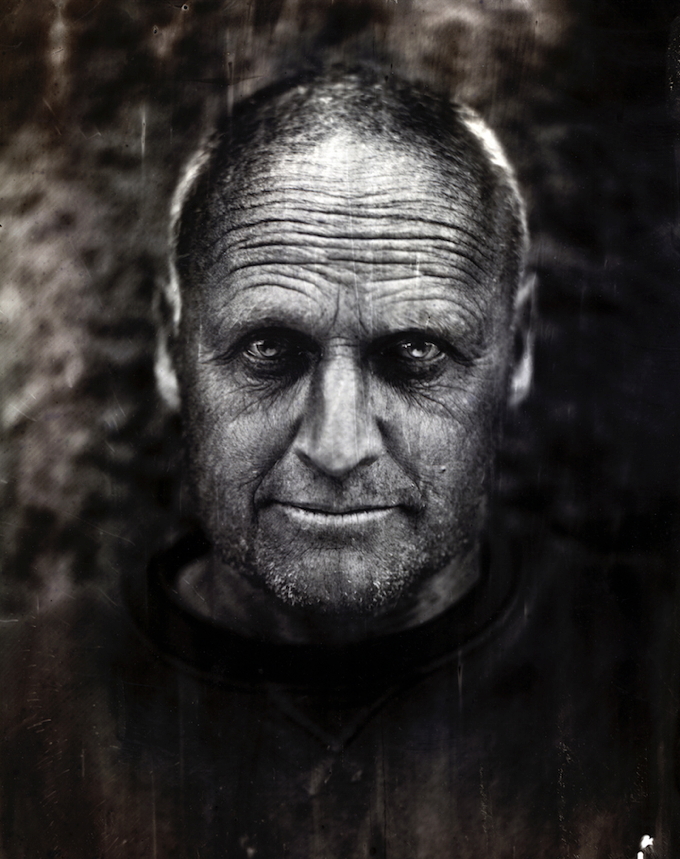
Eddie Macfarlane, fisherman, Dunbar [McArthur’s Store Series]
An award winning artist, Cook works with lens-based media focusing on large format film and antique photographic practice; he is also an award-winning filmmaker, combining 8mm and 16mm film with digital technology to great effect. His work is mercurial, rooted in place and the intrinsic connections between people, land and sea. Cook is currently artist in residence for Absent Voices. He tells us more about his work.
YOU are an artist. I was told this on the day I walked into Glasgow School of Art for the first time and it still fills me with both joy and fear. I make as many films as I put photographs on gallery walls. When I make a film for someone, I’m of course billed as a filmmaker. When I make photographs, because of the nature of them (physical, often plates on glass or tin) I’m often described as an artist. You are what you are making, creatively speaking, it seems.
I trained as an architect and my memories of an architectural education at Glasgow School of Art are that it was highly competitive. What it also was though was open; we worked across the whole school, especially in the early years, working under tremendous and enthusiastic people like Tony Barbour, and spending as much time as I liked life drawing. As the world of architecture closed in after three years, I began to make films on 8mm and slowly my current world opened up. What has stayed with me is the history, being taught by Gavin Stamp and James Macaulay was an honour; I used to sneak friends to their lectures. This engendered a love of landscape, place, people, of psychogeography.
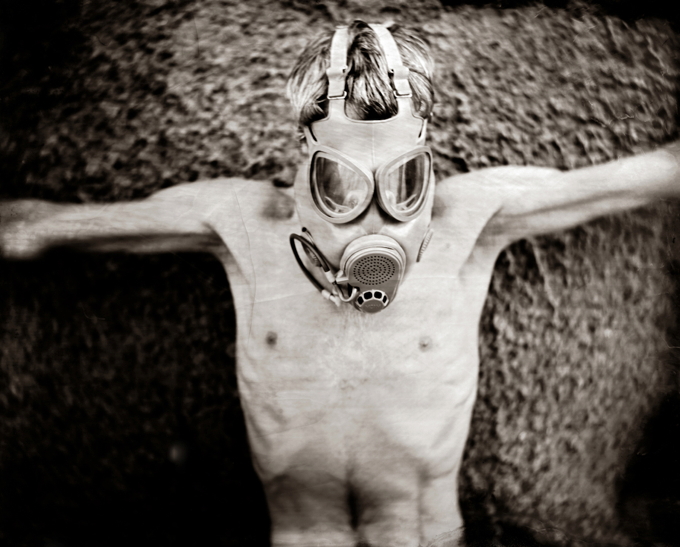
Held [made for Shane Balkowitsch’s ‘Mask Series’, to be exhibited in the USA in 2014]
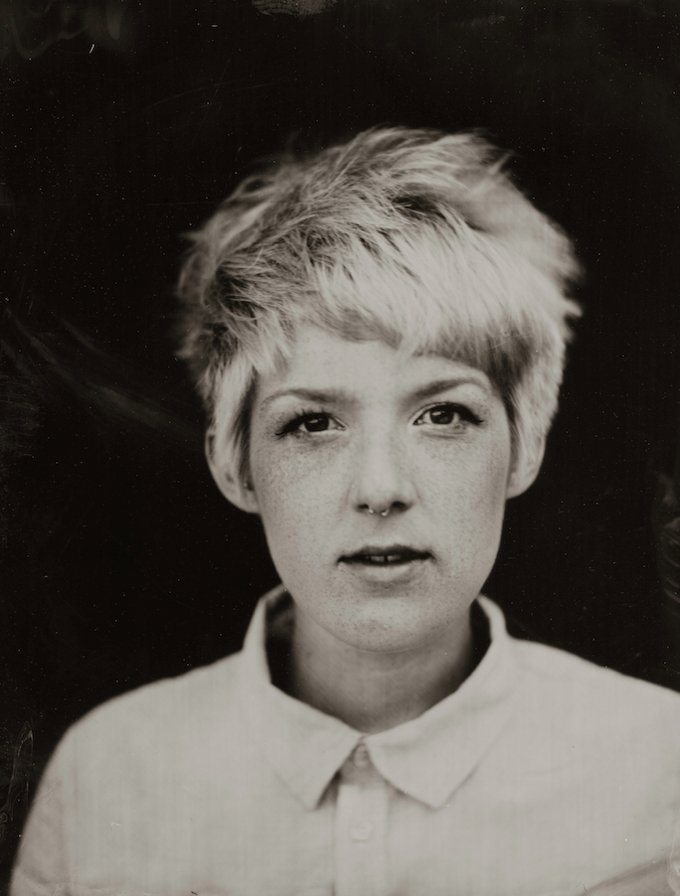
Aimee Neville [Collodion Portrait Series]
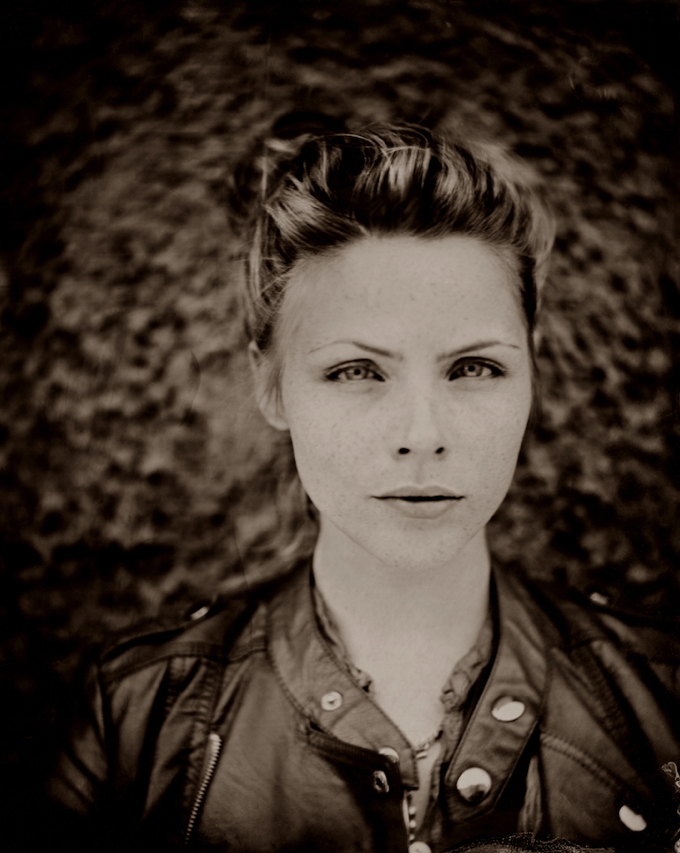
Kirsty Louise Jones [Collodion Portrait Series]
Over the past three years, thanks to Katie Cooke and Carl Radford, I’ve been working in portraiture using wet plate collodion, an entirely chemical photographic process dating from 1851. It was the primary method of capturing images from the early 1850s until the 1880s. The process must be completed before the plate dries; this brings a certain intensity, offering the ability to produce mercurial and unique images. What drives me in portraiture is the person: sitting, talking, drinking tea with the other I am about to capture.
The process of wet plate collodion is a process with a limited timeframe and yet there is no shutter on the camera: I am exposing using my hand and counting out loud in elephants (seconds). If I got my fancy pants Canon 5D Mark 3 out and snapped away, we may be at a 60th of a second, under lights. Your heart beats, your mind races, but what do you really do in a 60th of a second? With collodion, I use my hand to hold open the lens to expose a plate that I have just prepared for, say, five seconds. Within that time you can think. You can hear your heart beat and you can feel – nervous, comfortable, happy. Is this really just a photograph? There is more of you in it…
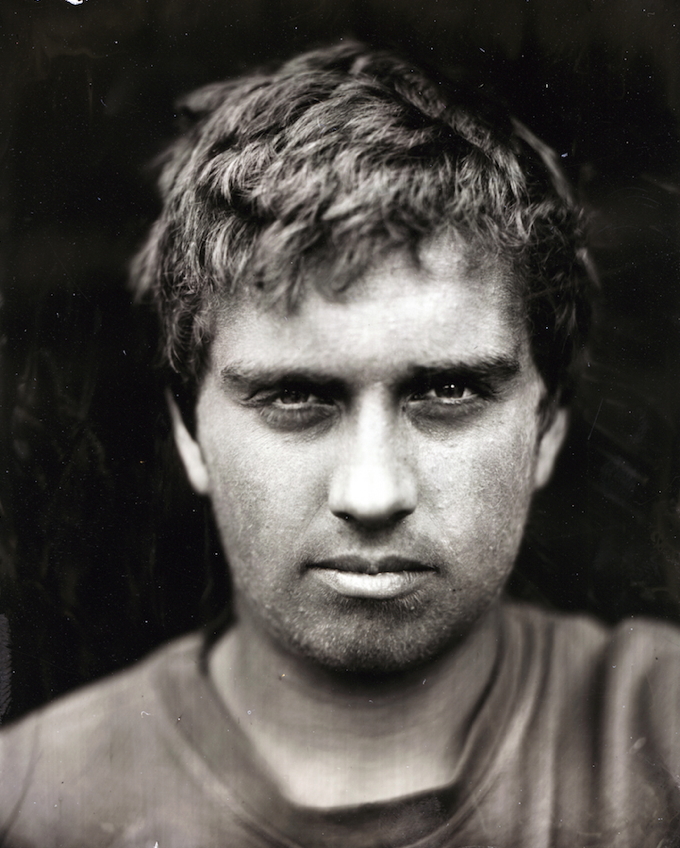
Rowan Davies, fisherman, Dunbar [McArthur’s Store Series]
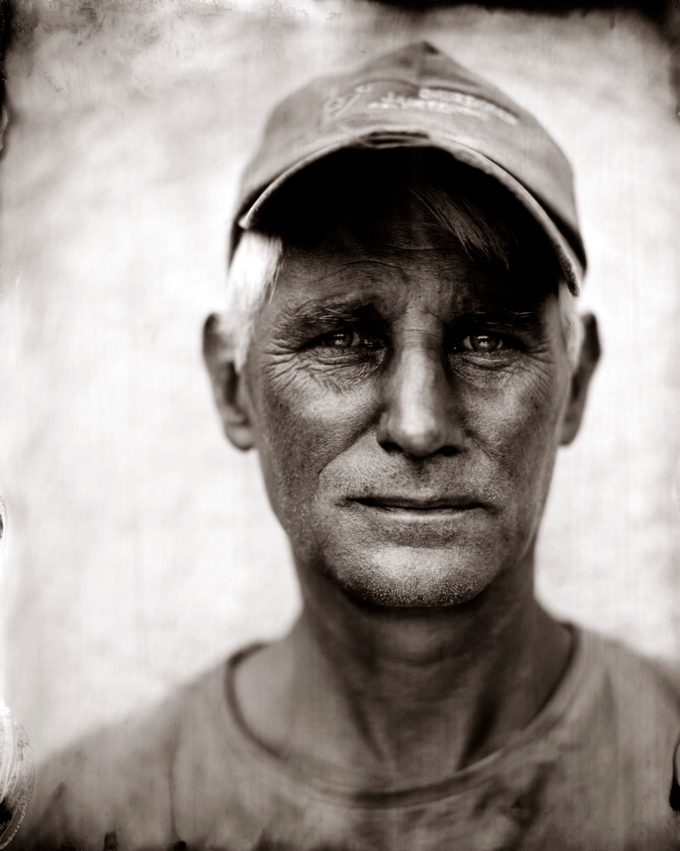
Mick McLoughlin, Welder, McArthur’s Store, Dunbar [McArthur’s Store Series]
Currently I have an exhibition called McArthur’s Store at Dunbar Town House. McArthur’s Store is a series of wet plate collodion tintype portraits of the fishermen who work from an historic creel store on the Old Harbour in the small Scottish fishing town of Dunbar. With the support of Dunbar Harbour Trust, I set up a traditional dark room within McArthur’s Store, a building dating from 1658, working with the men in their place of work for a total of six months over two years. This work is centred on people and place, exploring the issues surrounding our effect on our landscape and what imbues the very spirit of place. I decided to use this antique process to record these fishermen as collodion is sensitive at the violet end of the spectrum, delivering a clear visual depth, a suggestion that we are peering beneath the skin. These men have worked outside their whole lives, thrown around in all weathers and as such the collodion seems to accentuate their age, their chapped lined sunshine beaten skin. After beginning, I learned that the fishermen were bringing on the next generation, so in the second year of my residency I made portraits of the young boys, just recent school leavers but already experienced fishermen.
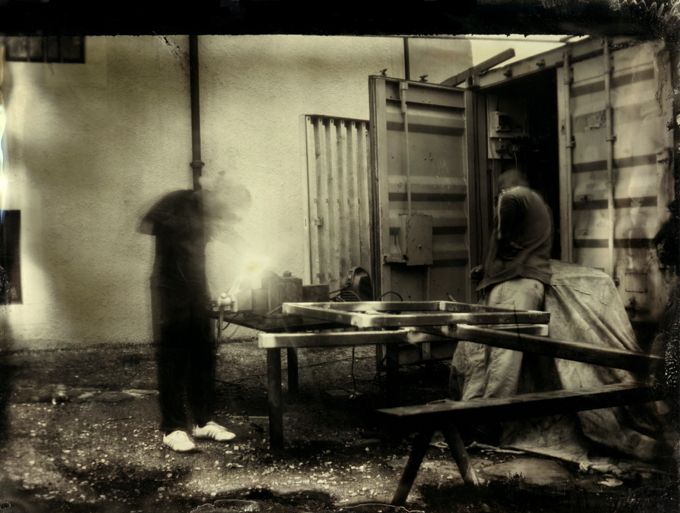
Compound [McArthur’s Store Series]
“Arresting and nostalgic, contemplative and intriguing…Cook’s portraits create their own atmosphere and intrigue. Rooted in place, they reflect its spirit, at once harsh and poetic; the tracings of light from a northern sky on raw metal.”
Giles Sutherland, The Times [4 Stars].
McArthur’s Store is currently exhibited at Dunbar Town House until 20 December 2013. A series of 16 framed fisherman’s portraits will be touring the United Kingdom during 2014 and Alastair will be publishing an accompanying book; four of these portraits form part of the Democratic Salon at Stills Gallery in Edinburgh, exhibited until Christmas. This series of work was funded through North Light Arts by Creative Scotland as part of Year of Creative Scotland 2012 and Year of Natural Scotland 2013.
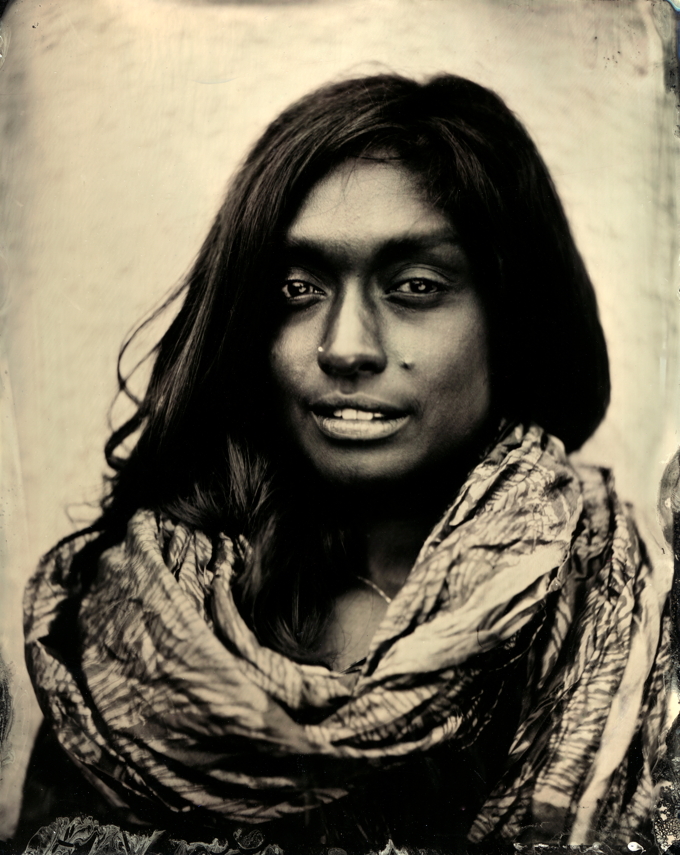
Uma Rebecca Nada-Rajah [Collodion Portrait Series]
More: Website
//////
Want to read more blogs by artists? Look here.


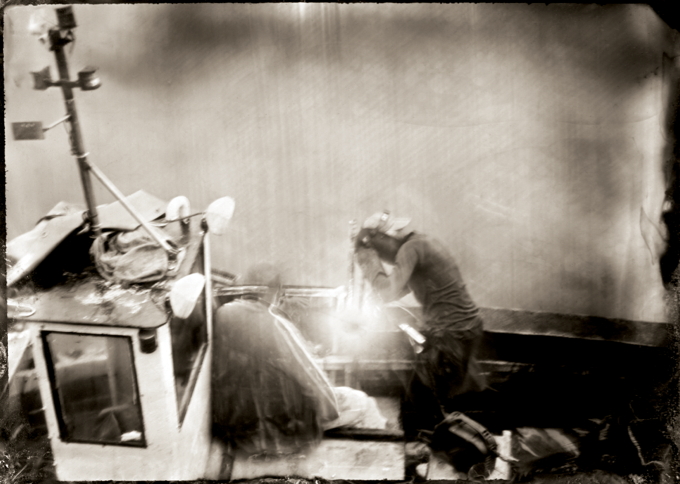
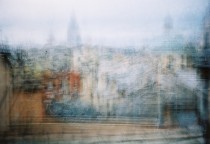
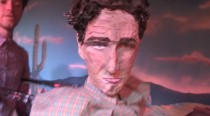
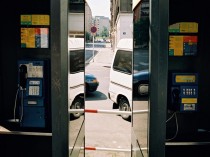









Comments